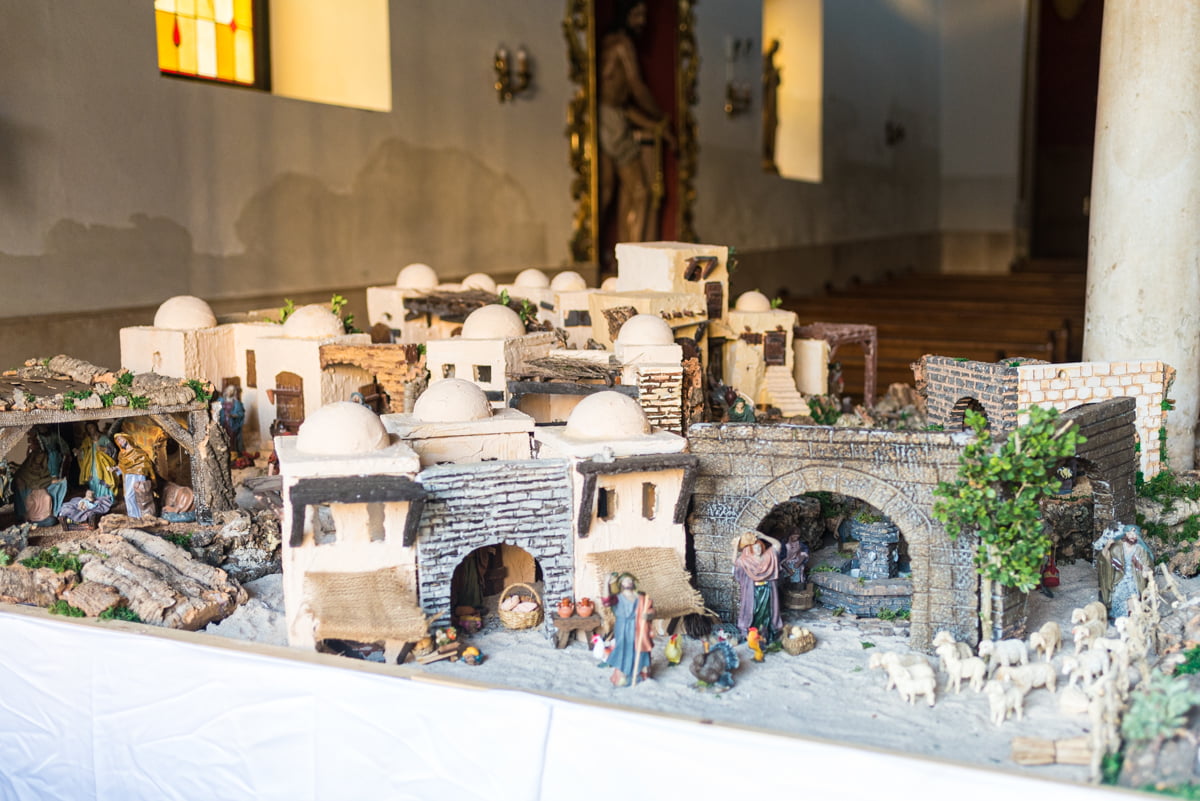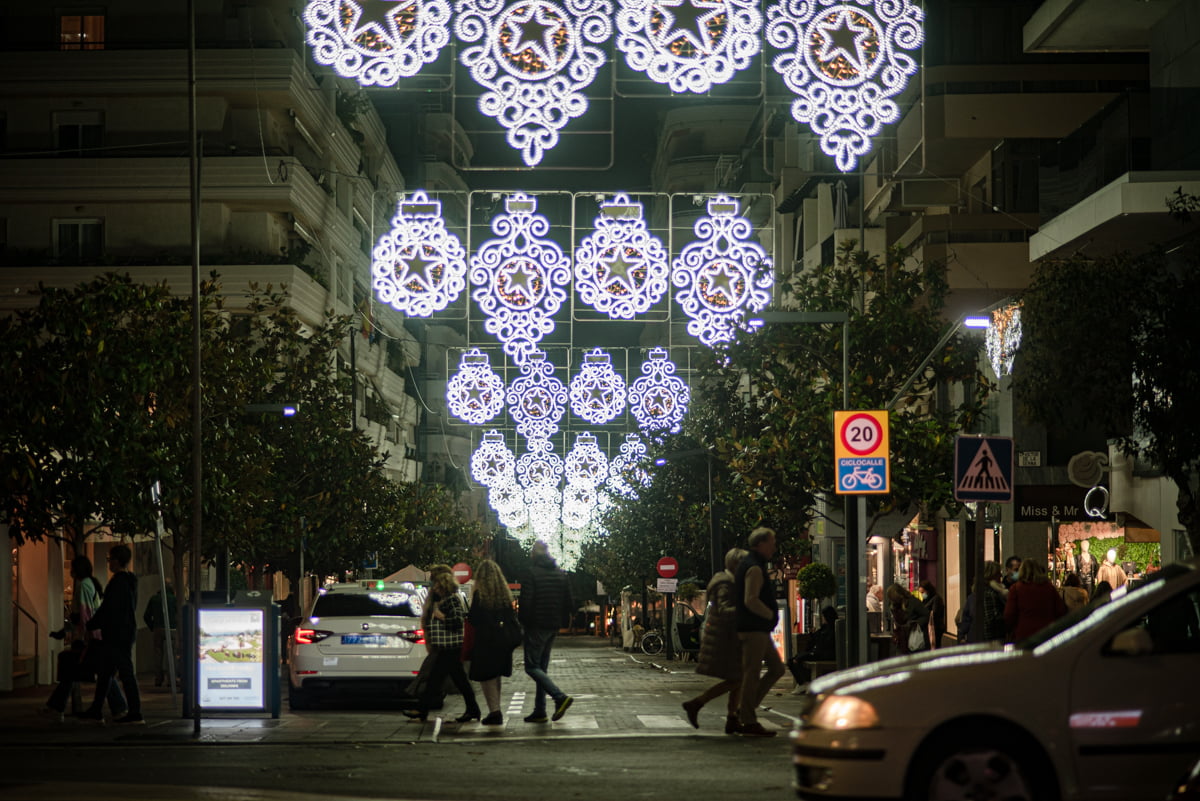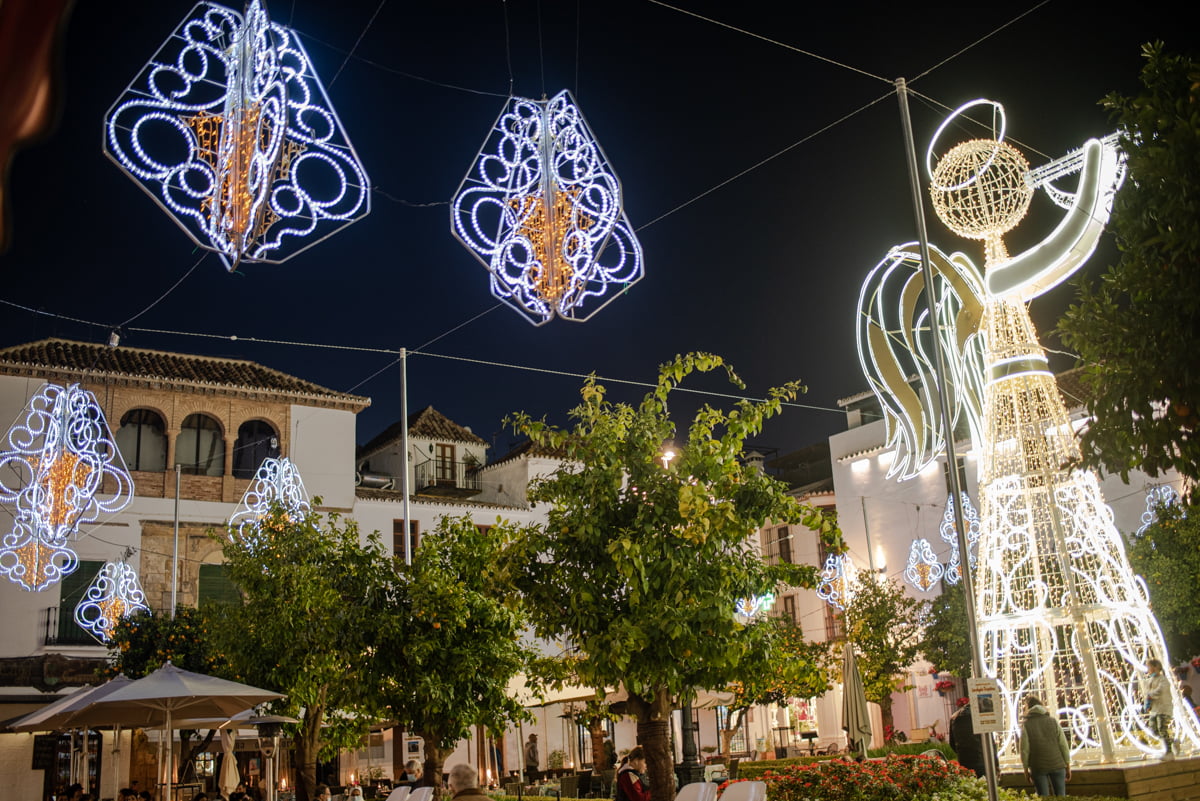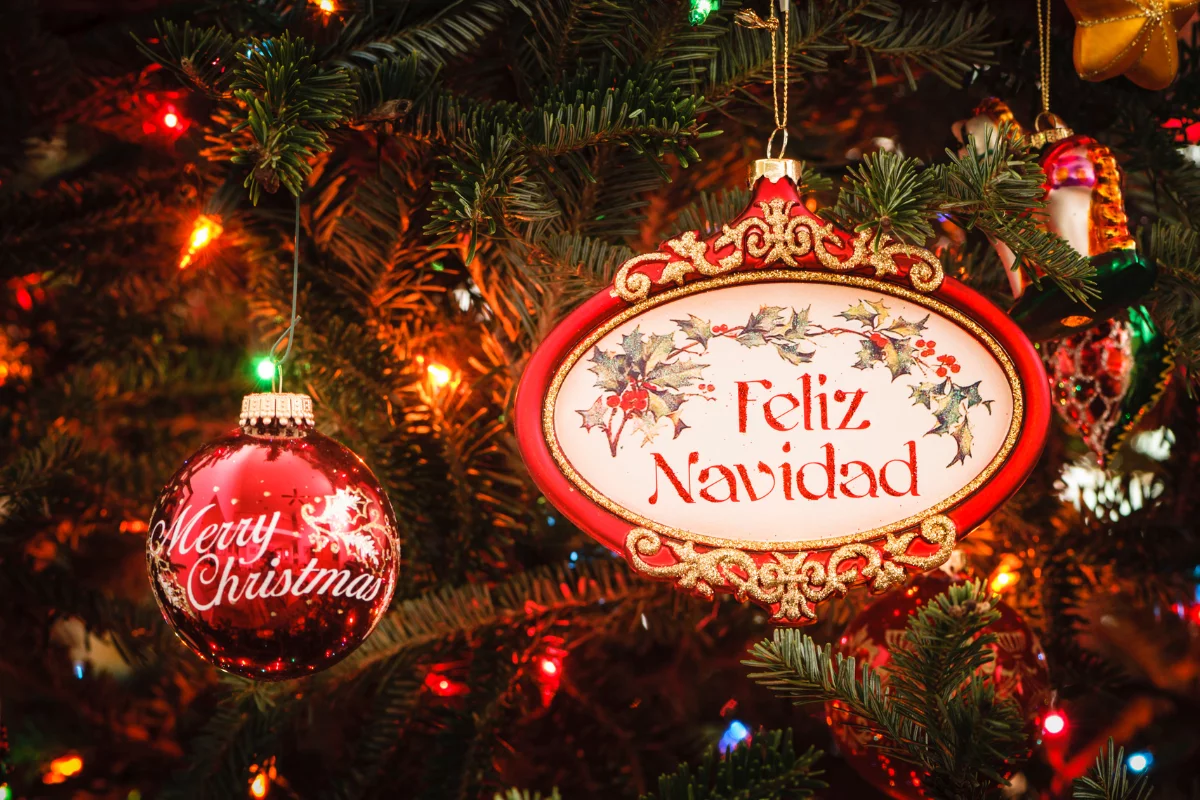What is worth knowing when going to Spain for Christmas? What are the differences between Polish and Spanish Christmas traditions? And why is the Christmas season in Spain so special? See for yourself!
The period, considered Christmas in Spain, covers the days between 22 December and 6 January. So it looks very different to our country, where the celebrations start with the traditional Christmas Eve dinner on 24 December. Thus, the Spanish extend the festive season to include Christmas Eve ( Nochebuena), New Year’s Eve (Fin de Año) and Epiphany(Reyes Magos).
However, the festive atmosphere can be felt much earlier. This year, Marbella is preparing a rich programme of attractions that begin as early as 1 December – with the opening of the nativity scene in the Plaza de la Alameda. The city streets are illuminated and Santa’s grotto opens in the Parque de la Alameda. The illuminations on Calle Enrique del Castillo are particularly charming. Even earlier, from the end of November, attractions such as the famous illuminations in Malaga attract visitors to the Costa del Sol.
Where to do your Christmas shopping?
From the first week of December, we can already feel the festive atmosphere at the famous Christmas Market at La Plaza Costa del Sol in Torremolinos, which will last until 2 January. There you will find not only traditional decorations, but also typical Spanish delicacies. A traditional market in Puerto Banus, full of festive touches, will also be open from 5 December to 5 January.
You can also shop at the La Canada centre in Marbella, which is also open during the festive period – as is El Corte Ingles Puerto Banus. Interestingly, Alcampo offers… big discounts from 28 December. For Christmas trees, on the other hand, go to Agrojardin or Leroy Merlin. If you want to visit either of the famous restaurants, remember to book in advance due to the very high demand. Interestingly, it is quite popular in Spain to invite a chef… to your home to prepare the meal of your dreams. It would be hard to find a more unique way to celebrate the festive season.

Famous Christmas illuminations
It is a unique experience to be able to see live the illuminations in Malaga – famous not only in Spain but all over Europe. The illuminations were switched on on 24 November at 7 p.m. During the Christmas period, the lights are switched on every evening from 6.30 p.m. to midnight (until 2 a.m. from Friday to Sunday, 24 and 31 December and 5 January). The show will end at midnight on 6 January, the day after the Epiphany parade.
A unique light show also awaits all visitors to the Jardín Botánico, the botanical garden in Malaga. When night falls, this one of the most beautiful and important tropical gardens in Europe opens up to visitors in a way you have never experienced before. You can enjoy the phenomenal festive unveiling of the Jardín Botánico until 8 January.
What else but the Christmas tree?
Spanish families often gather not only around the green tree, but also at the Portal de Belen, or Christmas crib. This extremely beautifully prepared decoration often also adorns the shop windows of many shops. The simplest nativity scene may consist only of the figures of Mary, Joseph and the Child, but larger compositions depict not only the nativity scene in Bethlehem, but also the desert and the Three Wise Men. In Poland, we buy Christmas tree decorations every year, so Spaniards buy more elements for their nativity scenes. In Andalusia, there is also a tradition of live nativity scenes.

Who brings the presents and when?
According to tradition, Spanish children look out for other characters besides Santa Claus – the Three Kings(Reyes Magos). In the Basque Country, presents are distributed by the Olentzero, or jolly grandfather. Traditionally, it is on Epiphany that children receive presents. To thank them for them, they leave milk under the tree for the camels and liqueur for the wise men. Increasingly, Andalusian homes also find presents under the tree at Christmas itself.
What’s on the Christmas Eve table?
In Poland, it has become a tradition to sit down to Christmas Eve dinner when the first star appears. In Spain, this custom is not followed and, as a result, people do not sit down to dinner until around 10 p.m.! While in Poland, Christmas Eve is associated with fasting, in Spain there is a completely different approach and the Christmas table is full of meat dishes (turkey, lamb or pork), seafood and, in rich houses, impressive lobsters. Christmas Eve desserts include polvorones (crumbling cookies), turron, a type of very sweet nougat with various toppings (almonds, strawberries, in soft and very hard versions).
Christmas break
In Spain, the Christmas break in schools and universities runs from 21 or 22 December until 8 January. The time off for working people, known as El Puente, already starts on 22 December and ends on 26 December. The whole of Spain celebrates the first day of the break by watching the Christmas lottery – El Gordo, which has a prize pool of more than €2 billion and costs from €20 per ticket (partial tickets can be purchased). The entire lottery ceremony lasts for nearly 4h and is accompanied by a TV setting, which includes the singing of each of the numbers drawn by children.

Grapes at midnight
According to tradition, Spaniards celebrating the arrival of the New Year prepare for a challenge just before midnight: to eat 12 grapes before the clock finishes striking 12 times, which is supposed to bring good luck. To succeed, it’s best to buy seedless grapes or pick the seeds out of them beforehand to facilitate the process of quick consumption. Although the task sounds simple, it is actually extremely difficult, as there is really little time between the striking of the clock! We encourage you to take on this challenge so that when you spend New Year’s Eve in Spain, you can fully experience the local atmosphere.
Not just a shepherdess
In Andalusian homes, Christmas is celebrated joyfully and loudly. After dinner, whole families celebrate this special time by singing pastorals, accompanied by the Zambomba (an instrument made up of leather stretched over an empty container used as a sound box) and everyday objects used to tap out the rhythm. Once the family part of the festivities is over, the young people head to local clubs where they party until dawn.

Procession of the Three Kings
Spaniards attach great importance to Epiphany, whose celebrations begin in the evening of 5 January. Every year, the streets of Marbella and other Spanish cities come alive with parades, music and joyful celebrations. They are paraded through ‘La Cabalgata de Reyes Magos’, which is a large, colourful procession staging the arrival of the Three Kings – Cacper, Melchior and Balthazar. The whole event is accompanied by loud music, flamenco dancing and the giving of sweets to children. A truly Spanish fiesta that is definitely worth seeing for yourself!
Christmas and New Year’s Eve in Spain
More and more people are choosing to go to Spain for Christmas or New Year’s Eve, which can also be seen by the interest in renting flats or villas just during this period. In Spain, Christmas is a family holiday, spent among relatives and friends. However, they have a more cheerful and fun character than in Poland. The Spanish fiesta and mild winter have convinced many people to stay in Andalusia for longer. In Marbella, the temperature in December is as high as 20 °C, and in the evening, thanks to the beautiful lighting, you can feel the festive mood.
Read more about surprising Christmas traditions in Spain here.

